According to Mongolian legends, only a lucky person can see a snow leopard or snow leopard (Uncia uncia and Panthera uncia). This Great Cat is considered a mystical animal, called the icon of the mountains: Most likely due to its elusiveness or unusually beautiful appearance.
Today, no one knows the exact number of this predator, but the fact of its possible extinction led to the fact that the snow leopard was included in the Red Book of the World and. The likelihood of meeting a beast shrouded in legends decreases every year, but the snow leopard continues to remain a living legend of the mountains.
Snow leopard habitat
The snow leopard's coat protects him from the cold. Snow leopards dare to live where ice storms freeze human blood in minutes. Their bodies are adapted to survive and thrive in an icy wilderness of breathtaking beauty and great danger. Snow Leopard, seem to like that - they avoid people with amazing skill. Their fur contains knots of gray and black, similar to the colors of the rocky outcrops where they live.
Features and habitat of the snow leopard
This coloration provides such good camouflage that the snow leopard can disappear while remaining motionless. Snow leopards live in the high mountains of China and Central Asia, especially throughout the Himalayas. They typically have a hunting range or territory of 100 square miles because very few prey animals are found in the harsh, mountainous habitat that the snow leopard is home to.
Appearance of the snow leopard
Probably the main reason for the disappearance of the only species of snow leopard, the snow leopard, is its elegant thick fur with a special color: large spots are “scattered” on a light gray-smoky-brown tone irregular shape black color.
In terms of size, the “mountain cat” is inferior to the lion and leopard, but occupies third place on a par with the cheetah. It weighs approximately 40 kg, has a body length of 120-130 cm and a tail length of about 100 cm. The shape of the head and build is very similar to a domestic cat. The predator's paws are very powerful and strong. They help the animal make huge jumps. According to hunters, a snow leopard can easily overcome a gorge 8-10 meters wide in one jump. The paws are equipped with sharp, narrow, retractable, curved claws.
Snow leopards have gray-white fur with long tails and rosettes on their sides and spots on the head and neck, like jaguars. This color is reminiscent of rocks and their snow environment and helps them pursue their prey. Their tails are unusually long, densely groomed and striped. Their paws are covered with fur to keep them warm and act like snowshoes. During snowstorms, they wrap their tail around their face, using it as a muff to keep warm. Their eyes are round and pale green to gray in color.
Snow leopards are masters of vertical space. Snow leopards eat almost anything they can catch, often hunting animals three times their size. Their main food sources are wild sheep and goats, pikas, hares and game birds. In the summer they eat mostly smaller prey such as marmots. They stalk their prey and usually begin to attack when they are 20 to 50 feet away. The snow leopard's wide paws act like snow boots and give them traction as they pursue their prey across rock, snow and ice surfaces.
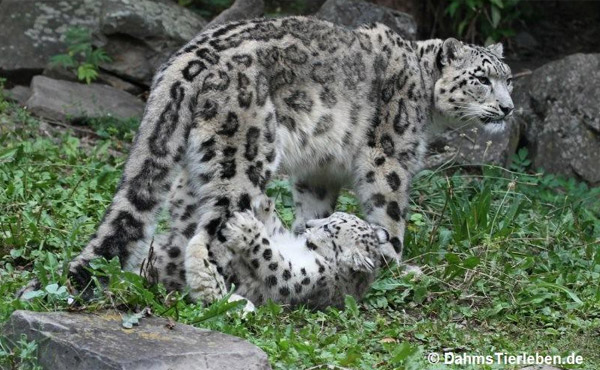
Snow leopard habitat
The snow leopard's habitat covers the territory of 13 countries: Russia, Kazakhstan, Afghanistan, Uzbekistan, Tajikistan, Mongolia, China, Kyrgyzstan, India, Burma, Pakistan, Nepal, Bhutan. Animals prefer life on the slopes of gorges, high in the mountains up to 5 thousand above sea level. That's why Snow leopards are considered exclusively mountain predators, the species of which is widespread in the mountain systems of Eastern Siberia, Tibet, Pamir, and the Himalayas. But since the number of animals has decreased catastrophically, if previously a family of snow leopards occupied an area of 8-12 square meters. km., today it has increased almost four times!
They are at their best when they can run across the hard crusts of ice that form over the banks of deep snow, while their prey breaks through the crust, soaking itself in the soft underlying snow. Unlike most other big cats, such as the lion, snow leopards cannot roar. snow leopards can run on rocky rock surfaces to reach their prey.
- The snow leopard has the longest tail of any cat.
- Snow leopards will attack prey four times their size.
- The snow leopard's large, densely covered paws act like built-in snowshoes.
- Snow leopards have the thickest fur of all cats.
Food, hunting
The main time for snow leopard hunting is twilight. It feeds not only on artiodactyls (rams, goats, wild sheep, etc.), but also does not disdain small mammals, for example, mice and hares. Despite its attachment to home, the snow leopard can wander quite far in the process of searching for prey. When cold weather sets in, the predator descends into the valley and even attacks livestock.
Protecting the snow leopard population
Snow leopards are highly adapted to their home in the cold, high mountains. Their thick fur, patterned with dark rosettes and spots, is ideal camouflage for their rocky habitat, allowing them to stalk their prey. Their beautiful coats also consist of long hair with a dense woolly undercoat to protect them from the cold.
Snow leopards have more tails than other big cats. They can reach 1 m in length and help leopards balance on steep rocky slopes. They also provide additional protection from the cold as leopards can wrap them around them while they rest.

Reproduction
The mating season is in March-April. The birth of cubs does not occur every year. This predator has a very slow reproduction rate, which is also the reason for the rarity of the snow leopard. The pregnancy of a female snow leopard is about 100 days. From 1 to 5 cubs are born. Newborns weigh about 500g and are born with closed ear canals and blind. Until 4 months, kittens feed on their mother's milk. Complementary feeding with meat begins at 2 months of age, and at six months the babies go hunting with their mother. By the age of three, snow leopards reach sexual maturity.
From Bhutan to China, this remarkable species plays a key role as both an apex predator and an indicator of the health of its high-altitude habitat. If snow leopards thrive, so will many other species, as well as the millions of people whose livelihoods depend on the rivers that flow from the mountains of Central Asia.
Where does the snow leopard live?
Snow leopards are solitary and elusive creatures that usually hunt at dawn and dusk. They are stealthy predators, capable of killing prey up to three times their weight. Favorable prey for snow leopards include herbivores such as blue sheep, Argali sheep and ibex. But in many areas, snow leopards also prey on livestock, bringing them into conflict with herders.
Irbis - Pearl of the Mountains
The snow leopard is not only a beautiful and unique animal, but is extremely interesting to science and has great value in nature. For many years the scourge of cattle breeding is mange. It is also transmitted to wild ungulates, which often appear on pastures next to domestic sheep. In animals kept at home, the disease is quickly treated. IN wildlife This terrible disease progresses quickly and brings a lot of suffering to animals. Only thanks to the snow leopard does the area where domestic sheep graze become healthier.
Indeed, snow leopard habitat provides important resources for local communities - from food and medicine to grazing and timber for shelter, heat and fuel. And also the water sources for millions of people downstream. The snow leopard is an icon of the high mountains of Central Asia, supporting numerous species and the livelihoods of countless people. Governments and conservation groups have shown their determination to stop the snow leopard's decline.
Our new strategy will provide a more systematic approach to global efforts to conserve species and their habitats. Habitat loss, poaching and growing conflict with communities have wiped out more than a fifth of the world's snow leopards over the past 16 years. And climate change now puts the future of its mountain home at even greater risk.
One cannot help but pay tribute to the emotional side: after all, whoever has seen a snow leopard at least once in his life will forever fell in love with a beautiful animal, experienced a wonderful and unforgettable moment!
Hello friends! Guess the riddle:
Lives high in the mountains
Poaching: Snow leopards have long been killed for their beautiful fur, but their bones and other body parts are also used in traditional Asian medicine. And illegal trade in snow leopard plots appears to be on the rise. Conflict with communities: Herders sometimes kill snow leopards in retaliation for attacks on their livestock.
Shrinking home: Snow leopards need large areas to thrive, but expanding human and livestock populations are quickly encroaching on their habitat. New roads and mines are also fragmenting the remaining range. Climate change: All of these threats will be exacerbated by the impact of climate change on fragile mountain environments, further putting the future of snow leopards at risk. It will also threaten the livelihoods of local communities and tens of millions of people living below these major watersheds.
This wild snow cat.
I'm sure you all understand perfectly well what this is snow leopard. A predatory animal from the cat family. A relative of the tiger, panther and leopard.
This animal has other names. It is also called the snow leopard or irbis. The word “irbis” came to us from the Turkic language and means “snow cat”.
Snow leopard leopard seized from smugglers. Argali or mountain sheep. For example, we have helped build leopard racks for livestock, and we have created compensation schemes for farmers who lose livestock to snow leopards. And supported traps and camera covers to learn more about this elusive species.
It will also work to scale up successful community-based approaches to reduce human-leopard conflict and mitigate the threats of climate change. Native to the rugged and snowy mountains of Central Asia, the critically endangered snow leopard is especially found in the Himalayan region. They are widely distributed in Central and South Asia in countries such as Pakistan, Nepal, Afghanistan, India, Mongolia, Uzbekistan, Tajikistan, Bhutan, Russia and Kazakhstan. They prefer to live in ridges, cliffs and rocky outcrops. They have gorgeous smoky gray coats patterned with black spots and rosettes. The belly fur is about 5 inches!
- It is a descendant of wild cats and panther families.
- China is home to 60% of the snow leopard population.

This predator is called the snowy one because of its beautiful light fur. Its fluffy, thick, warm coat is whitish-gray in color with dark ring-shaped spots, making it very similar to a leopard. And this coloring makes it almost invisible in its natural habitat. Where does he live?
What does a snow leopard look like?
The snow leopard's tail is almost as long as its body. Having a long, bushy tail is one of their unique aspects. The tail helps balance when moving along steep and narrow ledges. Why is the tail so thick and fluffy? Unlike most wild cats, the snow leopard lives in very harsh cold climates, so its tail acts as a muffler to protect its nose and mouth.
The female is approximately 30% smaller than the male. They have well-adapted paws for walking on snow and even breaking through thick snow cover. They are very similar to leopards. Often described as shy creatures, they are rarely seen outdoors.
Lesson plan:
Habitat
The snow leopard is a highland dweller. It lives in the high and rocky mountains of Central and Central Asia.
This beautiful cat can be found in countries such as:
- Afghanistan;
- China;
- India;
- Mongolia;
- Nepal;
- Pakistan, etc.
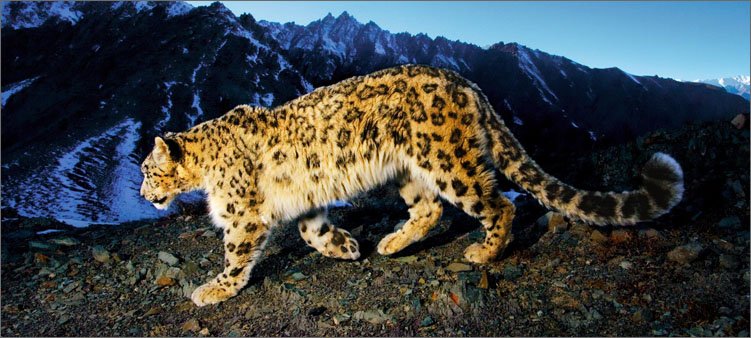
When they sense the presence of humans, they become nocturnal animals to avoid unnecessary encounters with humans who may pose a threat or danger. Due to the fact that they are protected by creatures, they are very mysterious and very little is known about them.
They are very independent and solitary creatures, living alone most of the time and only socializing during the mating season. Areas with little or no bush, such as the Tibetan Plateau, contain many ridges and rocky cliffs that offer protective travel routes for snow leopards.
On the territory of Russia there is:
- in the Krasnoyarsk Territory;
- in the Republic of Tuva;
- in Khakassia;
- and in Altai.
The snow leopard makes its lair in caves or crevices. There he spends most of his time during the day. Resting, playing, relaxing. Well, at dawn or dusk the leopard goes hunting. Do you want to know who he's hunting? Then read on)
Unlike other big cats, the snow leopard is a non-aggressive animal that, when threatened by another predator, may want to retreat, leaving the kill earned to the end of the invader. Reports of snow leopards attacking or killing people are unheard of; in fact, snow leopards are known to avoid human presence more than any other big cat.
They may only become aggressive to protect themselves or their young when threatened. An agile hunter, they are known to stealthily attack prey from behind, rushing after it at a time and tearing it to shreds. Feeding on a variety of herbivores found in their mountain ranges, snow leopards are the only known opportunistic predators of large cats.
Hunting

As we already know, the snow leopard is a predator. It hunts ungulates such as:
- mountain goats;
- rams;
- roe deer;
- moose;
- deer.
Sometimes he likes to feast on hares, partridges, marmots and other small animals.
Their common prey includes gazelles, deer, wild goats, sheep, snow cranes, picas, rodents such as hares, mice and rabbits, markers, bobucks, tahrs, marmots and wild boars. People who live in the Himalayan ranges primarily feed on bharals, also known as Himalayan blue sheep.
In winter, when large herds of herbivores migrate to warmer areas with rich pastures, the snow leopard can encroach on paddocks and kill all the livestock at once. On average, twice a month they can hunt large mammals and feed their flesh for several days.
In summer, the leopard adds plant foods to its diet, chewing grass and various leaves.
Snow leopards hunt mostly alone. They sit in ambush for a long time, watching their prey, and then overtake it with several powerful jumps. And the predator jumps simply wonderful: up to 6 meters in length and up to 2.5 - 3 meters in height. Then the leopard drags the prey to a secluded place and eats there quietly. Moreover, in order for a leopard to eat enough, 2-3 kg of meat is enough for him, so he does not finish eating, he simply abandons the prey and leaves.
After hunting animals, some drag their food into snow tunnels for storage and storage. Goats and sheep are their most common prey. They eat slowly and the kill can take 2 to 3 days. In summer they usually have spots on a less dense thin coat.
Their gestation period is about 3-3.5 months. Women look for well-protected rock crevices as comfortable and safe places to give birth, without fear of constantly being in any danger. The average female gives birth to litter consisting of 1-5 cubs.

The snow leopard loves to attack its prey from above, this makes it much easier for it to knock down a large animal and kill it. Hunting continues in hot summers and snowy winters. And winter in the mountains is harsh, but the leopard is saved from the cold by his chic, warm fur coat with thick undercoat. And in general, nature created this predator in such a way that it feels comfortable in the snow.
What does a snow leopard look like?
The leopard is much smaller than such well-known predatory cats as the tiger or lion. The length of its body including its head reaches 130 cm. Height at the shoulders is 60 cm. The weight of males is 45-55 kg. Males are slightly larger than females. The head is round. The ears are small and rounded. The legs are short and strong. The paws are flat and wide, this helps the snow leopard move through deep snow and not fall into it.

But if the snow is loose, then the leopard cannot walk on it without falling through. Therefore, he often tramples paths in snowdrifts, which he uses to move around. And the leopard has to walk a lot. Once every few days he makes a tour of his hunting grounds.
The snow leopard also has a beautiful, long, fluffy tail. The length of the tail can reach 1 meter. The tail helps the leopard make precise maneuvers during the hunt. That is, turn in the right direction in time. And little leopards also love to “hunt” on their mother’s gorgeous tail. They play with it when they are in the den with their mother.
Offspring
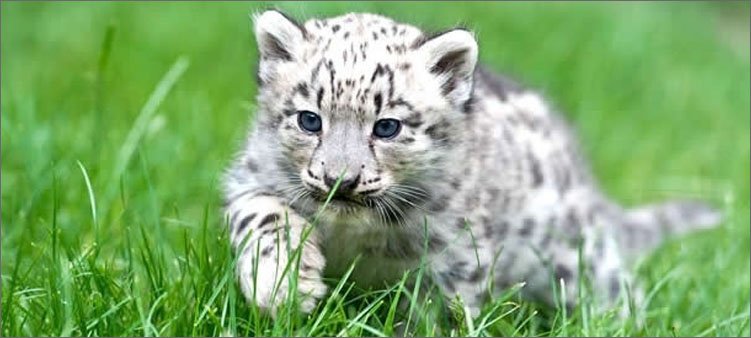
To give birth to cubs, the female makes a den in the most inaccessible and hidden places. Leopard cubs are born from April to June. Usually two to five young are born. They are born blind, but after 8 days the babies open their eyes and can see.
When the cubs are 5-6 months old, their mother begins to teach them to hunt. They go hunting as a family, but the last decisive jump is made by the female. The mother has been raising her children for 2 years. And then they leave to live an independent life. A life full of dangers.
Snow leopard's enemy
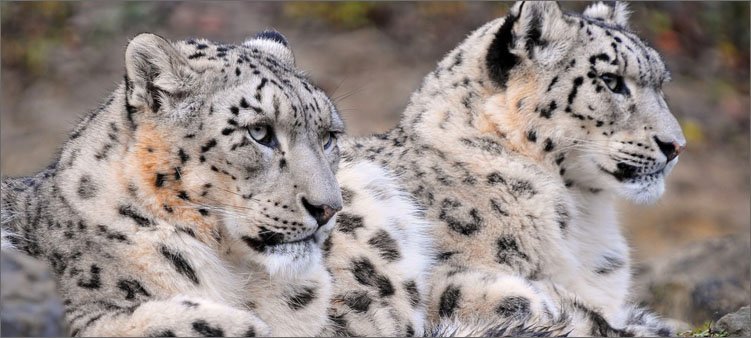
In nature, the snow leopard has no enemies. However, the leopard is in serious danger. And this danger comes from humans. It is man who is the most terrible, strong and cruel enemy of this beautiful predator. Despite the fact that leopards live in very hard to reach places, poachers kill them. They need beautiful fur, which is very expensive.
The snow leopard is afraid of people. There are only two known cases of a predator attacking a person. The first happened in 1940. Near Almaty, a leopard attacked two people and seriously injured them; as it turned out, he suffered from rabies. And in the second case, a very old, toothless, emaciated and hungry leopard jumped on a man from a cliff.
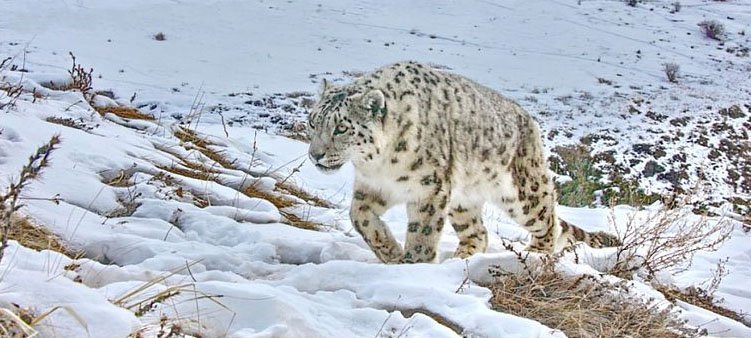
Today, only about 7,000 individuals are known to live in nature. Another 2,000 live in zoos around the world.
Snow leopards are listed in the Red Book and they need our protection. There is even a “Snow Leopard Day” in the environmental calendar; it has been celebrated since 2010 in Altai on May 26. You can read about other environmental holidays.
10 interesting facts about the snow leopard
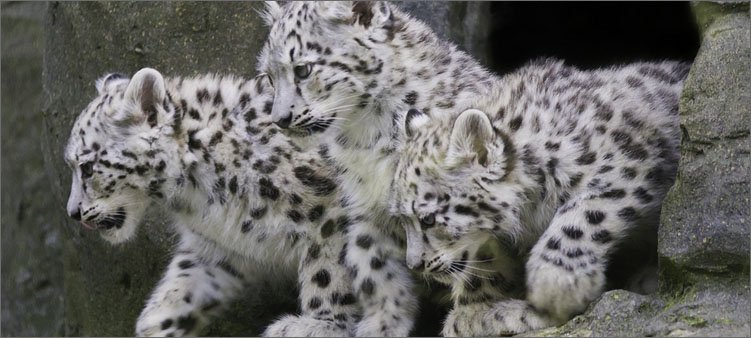
Oh yes, I have also prepared a wonderful video for you that will give you the opportunity to see the snow leopard with your own eyes.
I wish you success in your studies!
Evgenia Klimkovich.
